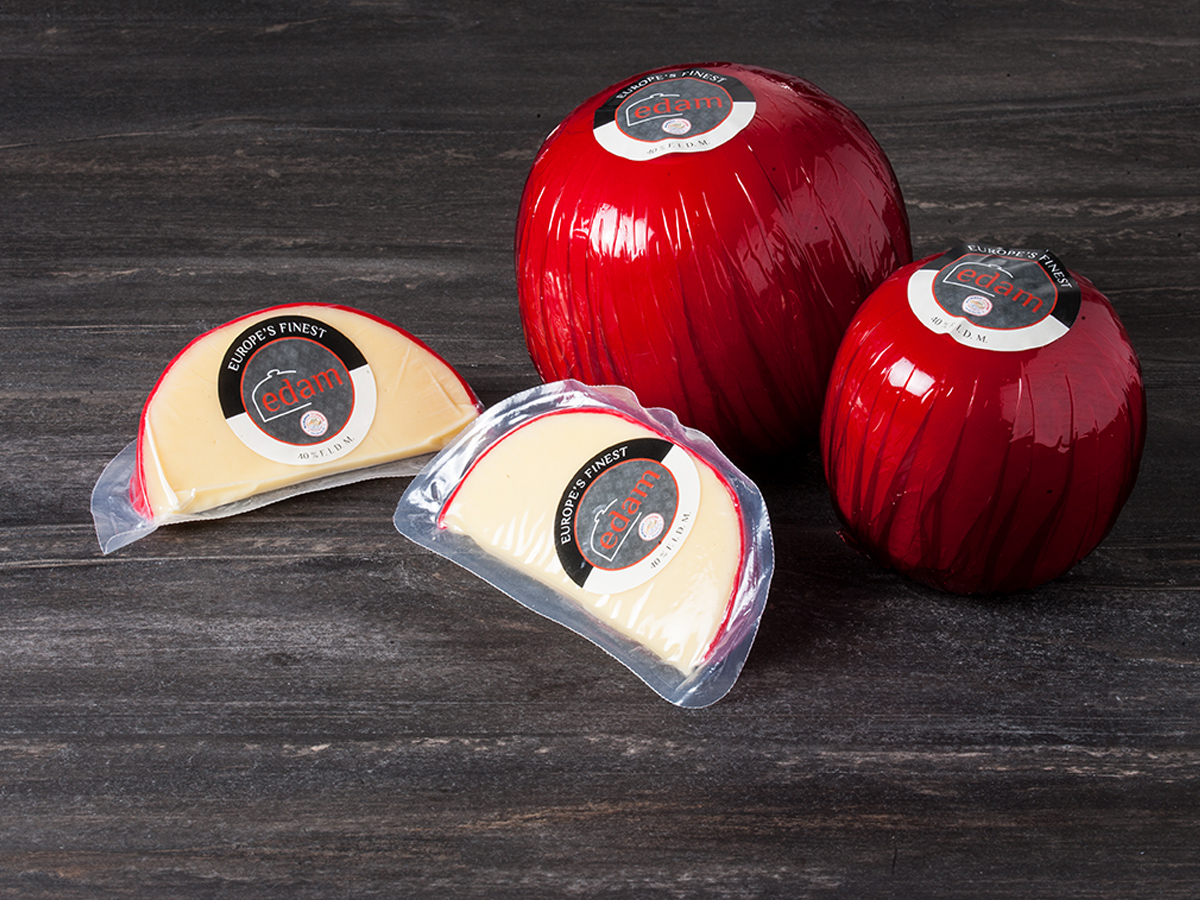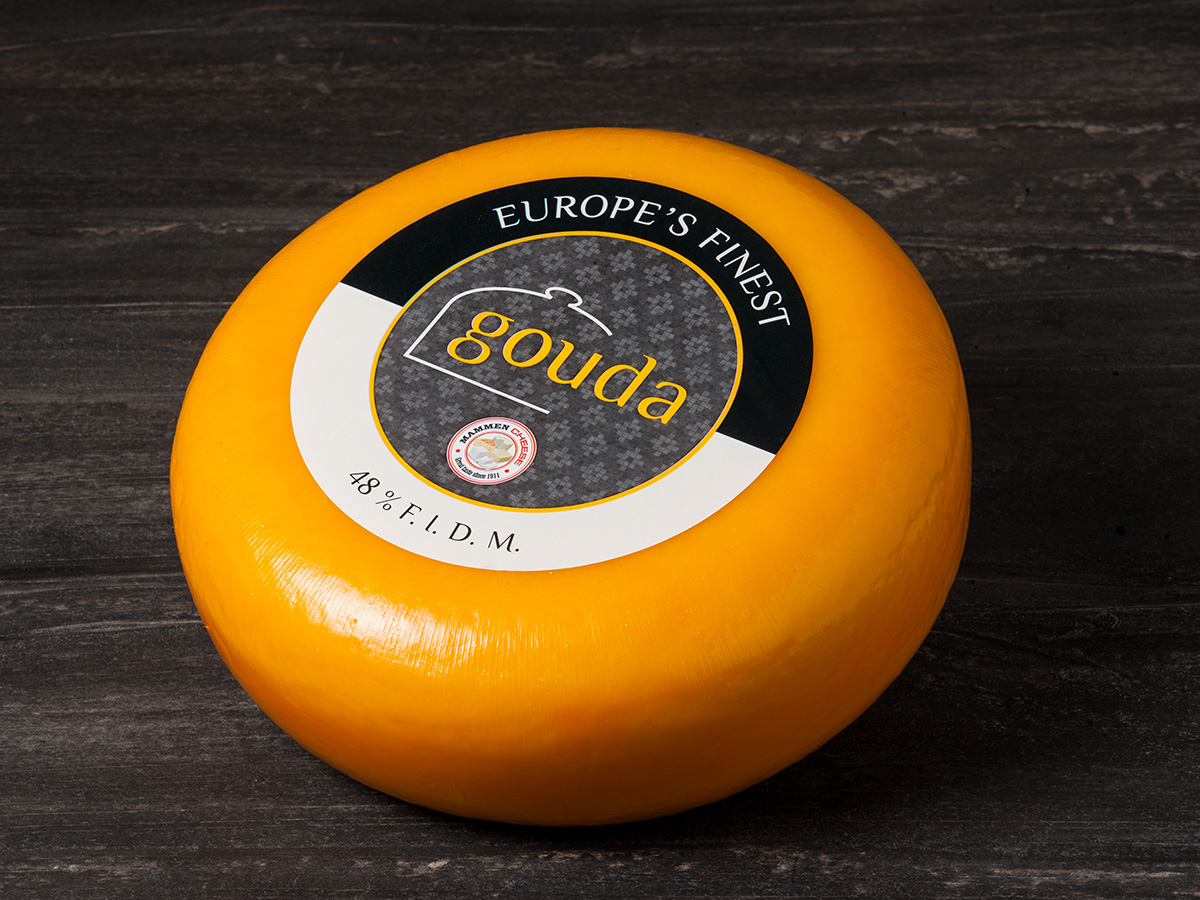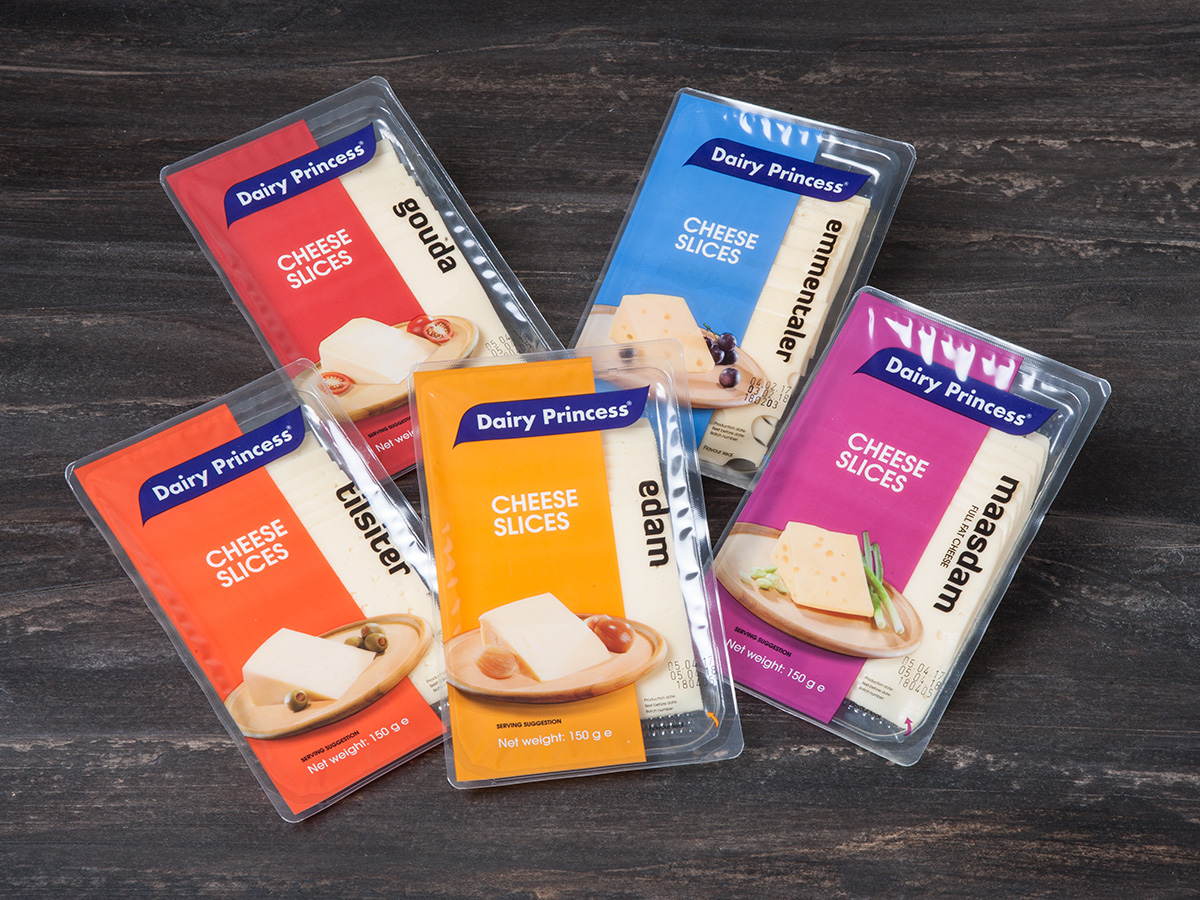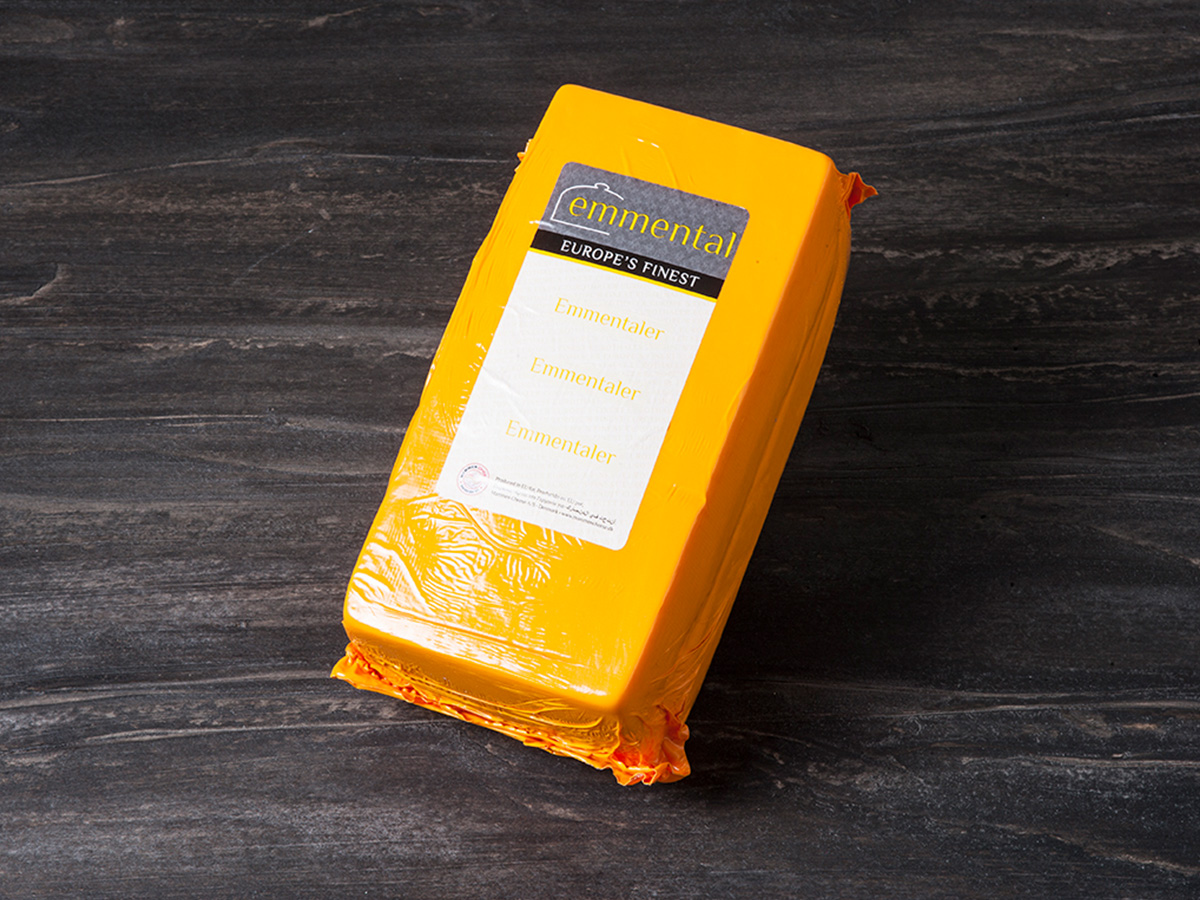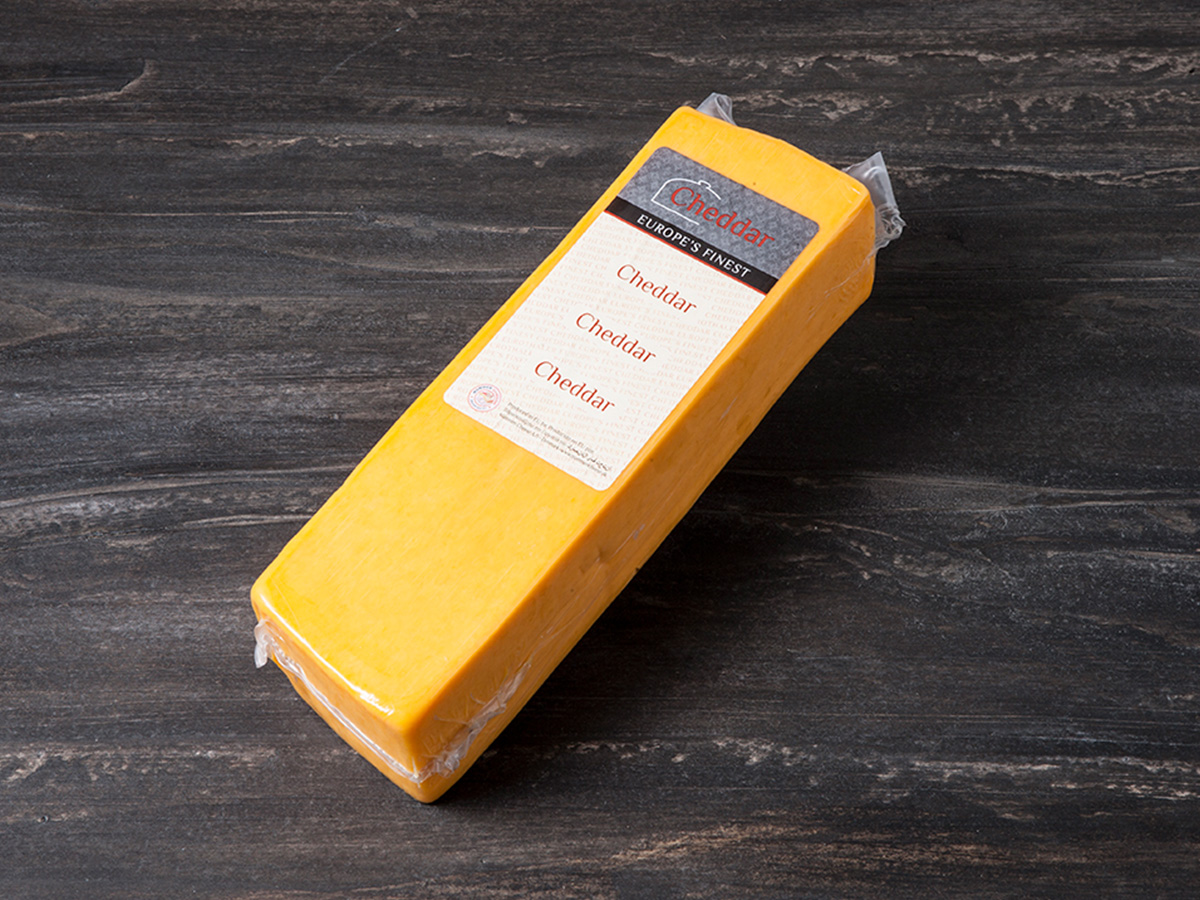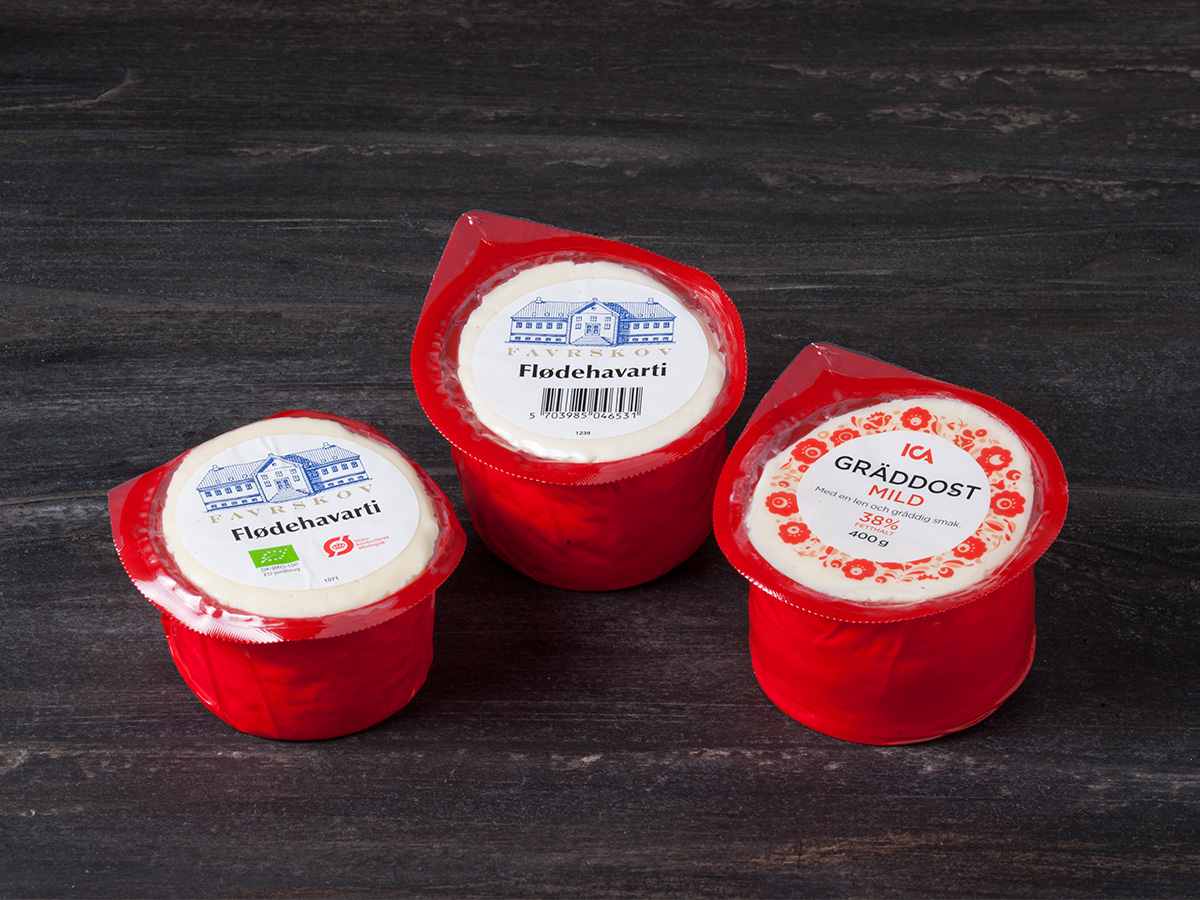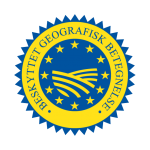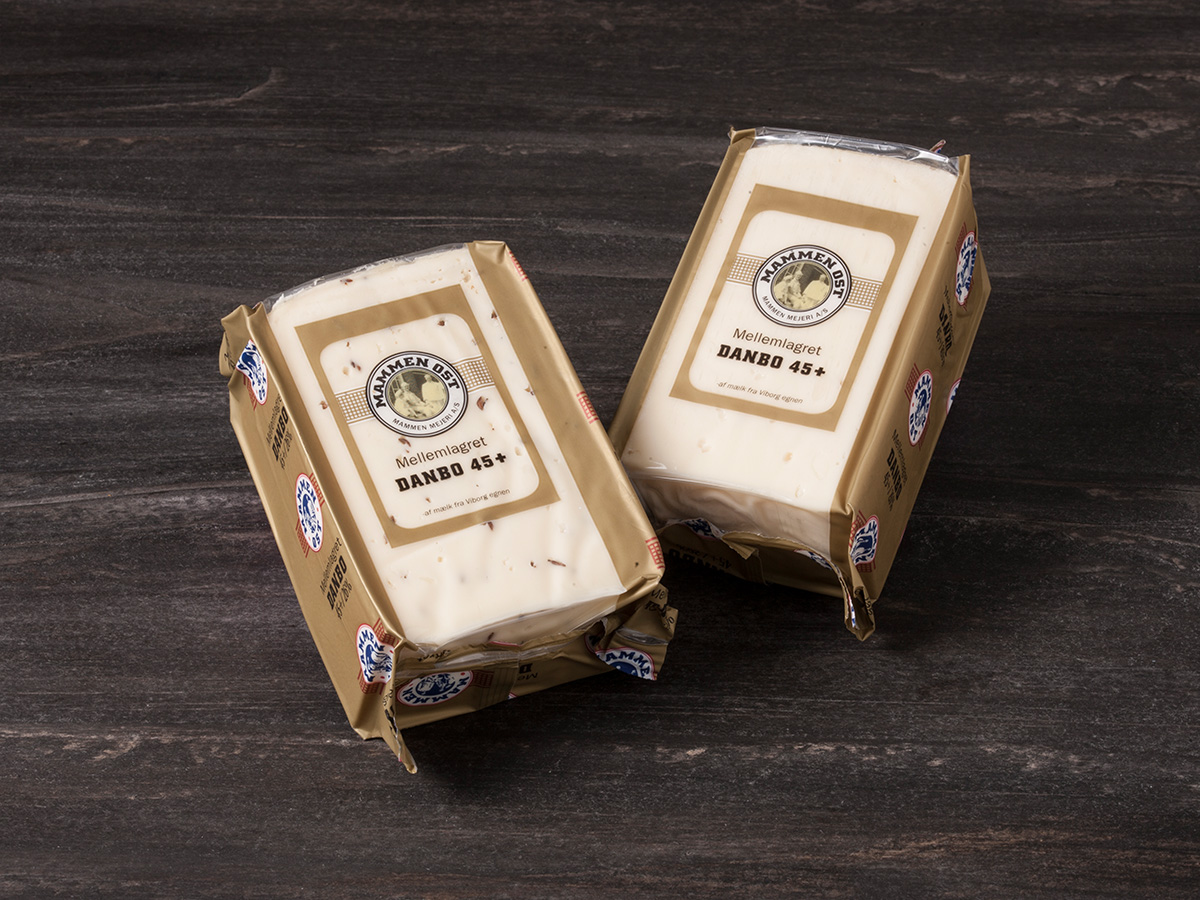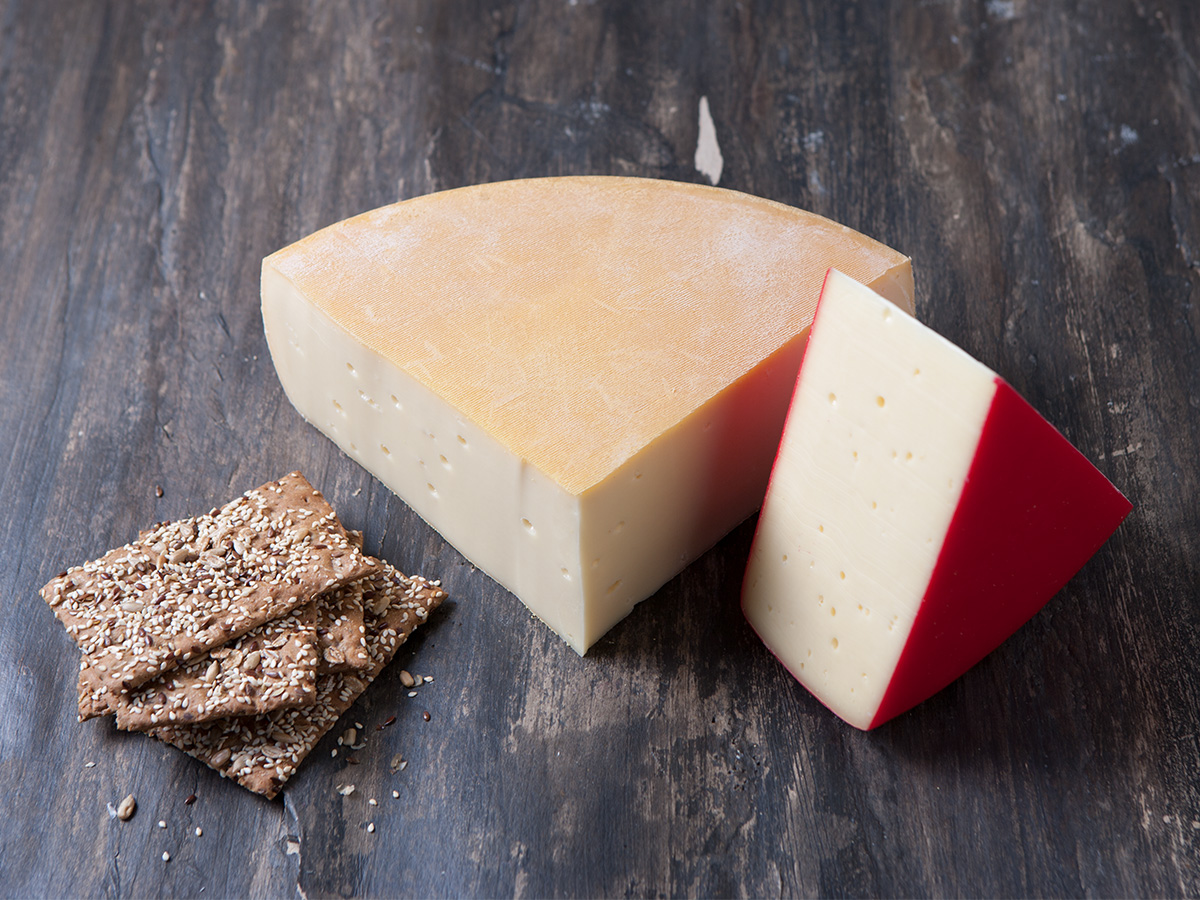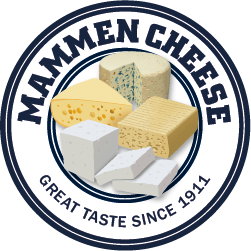Natural yellow cheese/hard cheese is produced with several different techniques, this provides the different taste, texture and wide differentation within this category for every single cheese type. The products are often processed & refined for different usage, such as shredding or slicing.
Cheese within this category: Cheddar, or hard pressed and matured Italian Grana Padano to the softer and younger Esrom or Edam and many, many more.
Different shapes and appearances:
- Blocks 5-90kg
- Loafs 2-4kg
- Wheels 4-90kg
- Cuttings 500g-3kg
- Portions 10g-500g
- Slices 100g-2kg
- Shredded 100g-5kg
- Dices 100g-2kg
- Shavings 50g-2kg
Natural yellow cheese/hard cheese is produced with several different techniques, this provides the different taste, texture and wide differentation within this category for every single cheese type. The products are often processed & refined for different usage, such as shredding or slicing.
Cheese within this category: Cheddar, or hard pressed and matured Italian Grana Padano to the softer and younger Esrom or Edam and many, many more.
Different shapes and appearances:
- Blocks 5-90kg
- Loafs 2-4kg
- Wheels 4-90kg
- Cuttings 500g-3kg
- Portions 10g-500g
- Slices 100g-2kg
- Shredded 100g-5kg
- Dices 100g-2kg
- Shavings 50g-2kg
Edam Cheese is named after the town of Edam in North Holland. Today Edam Cheese is manufactured in many different countries worldwide.
Edam is produced rindless in blocks or loafs and ball shaped with a rind of wax.
Our mild-fine Edam Cheese loaf is manufactured in Germany & from fresh pasteurized milk. It’s a natural cheese without rind and it’s packed in airtight cryovac to protect the cheese.
Click on the image to open a larger version.
Named after Gouda, a city in the western Netherlands, today it is being produced all over the world. The Netherlands’ most famous cheese, Gouda has a mild, nutty flavor similar to Edam. Young Gouda has a more mild flavor and the cheese gets stronger as it ages. Round traditional wheel-shaped Gouda is produced with a rind of wax or plastic coating. Blocks are often produced rindless and it’s one of the most common cheeses for processing and slicing in Europe.
Gouda is produced in wheels of 4,5kg & 12kg, loafs approx. 3kg and 15kg blocks.
Our mild-fine Gouda cheese loaf is manufactured in Germany from fresh pasteurized milk. It’s a natural cheese without rind and packed in airtight cryovac to protect the cheese.
Our Gouda wheels are produced in the Netherlands, coated in wax, with or without different flavoring.
Click on the image to open a larger version.
Maasdam cheese is a dutch cheese in a swiss-style made from pasteurized cow’s milk. It is aged for at least 4 weeks. Maasdam has holes from the ripening process, and a smooth yellow rind. The cheese was created to compete with the popular swiss Emmental.
In the process of making a cheese with the same general components as swiss cheese, the dutch ended up with a cheese that has a nutty and fruity aftertaste, but softer than Emmental. It is eaten young, and is delicious either as a snack or in a sandwich.
Maasdam is produced in wheels 12kg, loaves approx. 3kg and blocks 15kg.
Click on the image to open a larger version.
Emmental cheese or swiss cheese originates from Switzerland. It was named after the river called Emme which is running in Emmental in the Switzerland alps. Tal is the German word for valley. The name Emmental Cheese is not a protected origin by name and therefore it is also manufactured in many other countries than Switzerland. The original Swiss Emmental is produced from unpasteurized cow’s milk, while other origins are typically produced from pasteurized milk. Emmental is typically produced either in approx. 90-100kg wheels (more than 1200 liters of milk is used for one cheese) with natural rind or approx. 90kg blocks, rindless.
Our German Emmental Cheese is manufactured in Bavaria in the South of Germany. It’s made from fresh pasteurized cow’s milk from the Allgäu Mountains. It’s a natural hard cheese with 45% fat in dry matter without any rind. During its maturation it develops the characteristic eye formation holes and its mild sweet nutty aroma.
Loaves packed in approx. 3 or 6kgs.
The cheese is perfect for sandwiches and toasts. It’s also excellent together with red wine as a snack.
Click on the image to open a larger version.
Cheddar cheese is a relatively hard, pale yellow to off-white (unless artificially colored), and sometimes sharptasting, cheese. Originating in the English village of Cheddar in Somerset, cheeses of this style are produced beyond this region and in several countries around the world. The cheese has been manufactured in this area since the Middle Ages.
The style is the most popular cheese in the United Kingdom, accounting for approx. 50 percent of the country’s annual cheese market, and the second most popular cheese in the United States, behind mozzarella.
The name “Cheddar cheese” is widely used and has no Protected Designation of Origin (PDO) within the European Union, but only Cheddar produced from local milk within four counties of South West England may use the name “West Country Farmhouse Cheddar”, it’s cylindrical-shaped, covered with weave and is often produced from unpasteurized cow milk in sizes up to approx. 27kg.
Cheddar for industrial usage is produced from pasteurized cow milk in 20kg rindless blocks, white or colored.
Cheddar is one of the most common cheeses for processing in the world due to its melting capabilities, taste and structure.
Our cheddar is block-shaped from various destinations/producers from all over the world depending on preference. It’s available in 2,5kg, 5kg, 10kg or 20kg foil wrapped, white or colored.
Click on the image to open a larger version.
The term Mozzarella is used for several kinds of Italian cheeses that are made using spinning and then cutting (hence the name, as the Italian verb mozzare means “to cut”). Mozzarella belongs to the group of cheeses called “Pasta filata” = spun paste.
Today Mozzarella is produced globally and it’s one of the single biggest cheese types produced in the world.
- Mozzarella di Bufala (buffalo mozzarella), made from domesticated water buffalo milk.
- Mozzarella “fior di latte”, made from fresh pasteurized or unpasteurized cow’s milk.
- Low-moisture mozzarella, which is made from whole or part skimmed milk, and widely used in the food-service industry.
Fresh mozzarella is generally white, but may vary seasonally to slightly yellow depending on the animal’s diet. It is a semi-soft cheese. Due to its high moisture content, it’s traditionally served the day after it’s made, but can be kept in brine longer when sold in vacuum-sealed packages. Low-moisture mozzarella can be kept refrigerated for up to several months.
Mozzarella is used in the Foodservice sector in various shapes and conditions. Fresh, frozen, packed in vaccum, packed in brine, blocks, files, portions, shredded, fresh sliced, IQF sliced or shredded.
Click on the image to open a larger version.
Havarti was first developed in 1952 by a Danish dairy pioneer named Hanne Nielsen. The cheese was named after Hanne Nielsen’s dairy farm Havartigård. Having been appointed a purveyor to the Royal Danish court, Hanne Nielsen supplied her cheeses and butter to the royal family from her own store in Copenhagen.
Havarti is a distinctive, creamy and mild yellow cheese made from fresh, pasteurized milk according to an authentic, traditional Danish recipe. The traditional shaped Havarti was a 4kg loaf. It has very small and irregular openings (“eyes”) distributed in the mass and has a unique buttery flavor.
The Havarti cheese is today, produced with different fat content, low fat 30+ to Creamy 60+. Besides the loaf, you can also find cylinder shaped creamy Havarti as well as matured strong tasting 8kg block cheese to 15kg rindless mild blocks for processing.
Our Havarti 60+ is sold in 400g cylindrical shaped retail packs and 4kg loaves or 14kg blocks.
Click on the image to open a larger version.
Samsø is a Danish firm cheese with limited holes and a dry, yellowish crust or as rindless blocks. Our Samsø cheese is produced on the Mammen Dairy. The cheese is made from cow’s milk. Samsø cheese has been produced for many generations on the island of Samsø.
Production started around 1800, when Danish cheese producers were interested in making foreign cheeses for the domestic market. In 1952 the name was Samsø, the official name for the Danish Switzerland cheese type.
Samsø cheese is excellent for all types of cooking. Shredding, slicing, cutting and handling in general is easy with this cheese. Melting capabilities makes it perfect for gratins as well as pizza or just as an excellent alternative on a sandwich or as a snack.
Traditionally the cheese was produced circular shaped with rind/wax.
Today almost all Samsø is produced rindless in 14 kg rectangular blocks for processing.
Our Samsø is produced with a fat content from 10+ to 45+.
Click on the image to open a larger version.
Our Danbo cheese is produced at Mammen Dairy. Danbo is a firm, semi-solid cheese with regular holes and a dry crust. It is made from pasteurized cow’s milk.
Danbo was first produced in 1897 by Rasmus Nielsen at Kirkeby Dairy. Today Danbo is Denmark’s most produced cheese, and it is available in a myriad of different brands as well as in a wide range of maturations.
Danbo is produced with a fat content from 10+ to 45+. The cheese has a rind with wax and is also often covered with aluminum foil for profiling under the wax.
Traditional size is 8kg but it’s also produced in 4kg products as well as 12kg for special applications and usage, normally cutting or slicing.
Click on the image to open a larger version.
Grana Padano is PDO & CDO European protected, one of the most popular cheeses of Italy. The name comes from the noun grana (‘grain’), which refers to the distinctively grainy texture of the cheese, and the adjective Padano, which refers to the valley “Pianura Padana” (Po Valley).
Grana Padano is one of the world’s first hard cheeses, created nearly 1,000 years ago.
It is made in a similar way to the Parmigiano Reggiano of Emilia-Romagna but over a much wider area and with different regulations and controls. Parmigiano Reggiano can only be produced in a small limited area south of the river Po and under strict regulations.
Like Parmigiano Reggiano, Grana Padano is a semi-fat hard cheese which is ripened slowly, for at least 9 months. Grana Padano is produced with partly skimmed milk heated up to 53-56°C. It is produced year-round and the quality can vary seasonally as well as by year. Though similar to Parmigiano Reggiano cheese, the younger Grana Padano cheeses are less crumbly, milder and less complex in flavor than their more famous, longer-aged relative.
Parmigiano Reggiano is produced with no additives, Grana Padano doesn’t have the same restrictions.
A wheel of Grana Padano or Parmigiano Reggiano is cylindrical, with slightly convex or almost straight sides and flat faces. It weighs 24 to 40 kg (53 to 88 lbs) per wheel. The rind, which is thin, is white or straw yellow. The cheese is sold in different maturations up to 36 months. Grana can be sold from 8 months and Reggiano from 12 months, where the cheeses are controlled and classified by a certified representative from either of the two different consortiums.
Our Grana Padano & Parmigiano Reggiano can be found in all different maturations & packages from whole wheels (approx. 35kg) to retail packages of 50g.
Click on the image to open a larger version.
Danish Fontal Cheese is an Italian inspired cheese that is mild in taste. It’s a semi-soft cheese with a creamy and slightly nutty taste. Made from pasteurized cow’s milk.
The cheese is covered with red wax (paraffin) to protect the cheese. It’s excellent as a snack and with wines, for sandwiches, breakfast or shredded on top of hot dishes. Our Danish Fontal is 45+ F.I.D.M (Fat In Dry Matter) and produced in approx. 6,5kg wheels.
Click on the image to open a larger version.

